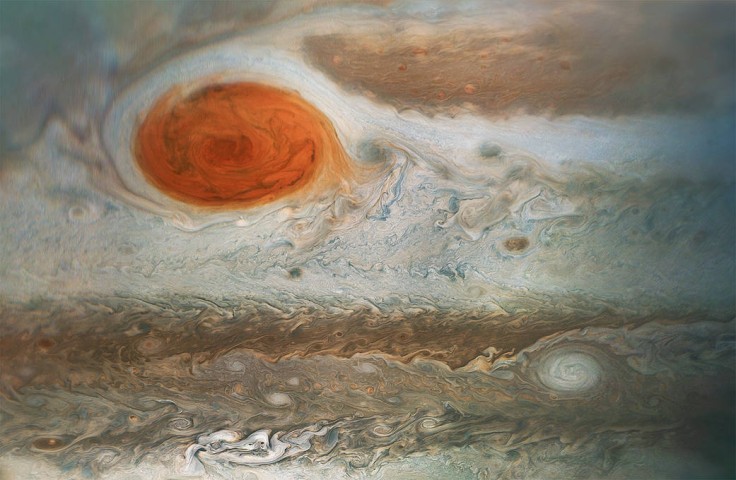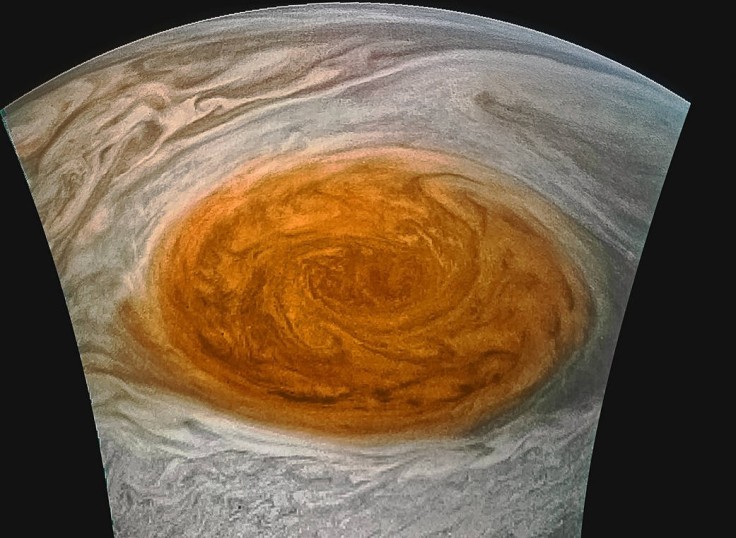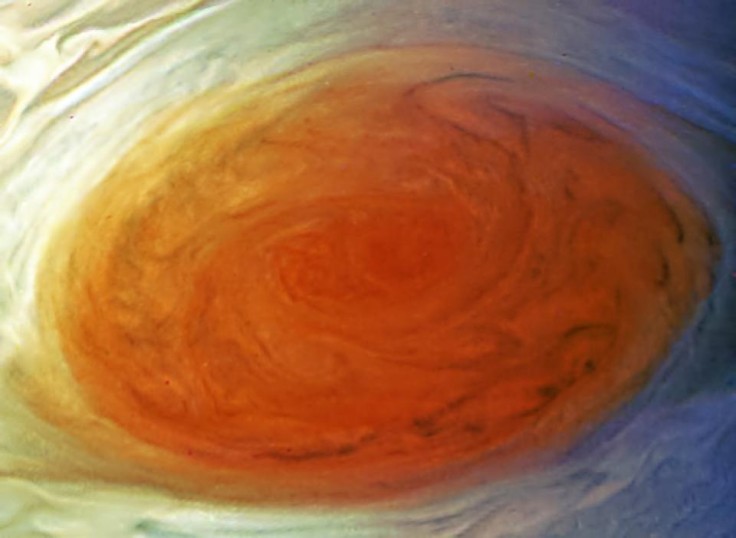Amateur astronomer Samuel Heinrich Schwabe first spotted Jupiter's Great Red Spot in 1831. However, it could be even older as some astronomers believe astronomer Gian Domenico Cassini was alluding to the Great Red Spot when he wrote about a "Permanent Storm" in 1665, as per the report of Space.com

What is the Great Red Spot?
Jupiter's Great Red Spot is a massive storm that circles the planet in its southern hemisphere and is nearly twice as wide as Earth. The storm's center has relatively calm winds, but the storm's edges have wind speeds of 270-425 mph (430-680 km/h).
An eastward-moving atmospheric band to the north and a westward-moving atmospheric band to the south contain the storm. According to Glenn Orton, a lead Juno mission team member and planetary scientist at NASA Jet Propulsion Laboratory, those swirling bands are what created the storm in the first place and have kept it spinning for more than a century, Space.com said (via Business Insider).

Since scientists began regularly watching the storm in 1850, they've found that it shrinks and expands on occasion, but is now shrinking. What was once three times the size of Earth is now merely twice the diameter of our planet. In a much simpler words, the Great Red Spot may be disintegrating.
Amy Simon, a senior scientist at NASA's Goddard Space Flight Center, told The Atlantic: "We think what happens is [storms] hit a stable size, and that's when it should stop and just kind of stay that size, unless something breaks it apart."
Read More: Wandering Black Hole May be the Smallest One Discovered - How Did the Scientists Spot It?
Closest Image of Jupiter's Great Red Spot
According to a Vox report, the Juno spacecraft approached just 5,600 miles above Jupiter's Great Red Spot on July 10, 2017.

However, it is worth noting that this mission is much more than just taking pretty pictures. In fact, Juno possesses instruments that can detect magnetic fields, as well as Jupiter's atmosphere's mass and composition.
With Juno's discoveries, scientists might provide light on a major mystery: why has the area of Jupiter's Great Red Spot shrunk over time.
NASA's Juno Spacecraft
A separate Space.com report said that after the Galileo spacecraft, which orbited Jupiter from 1995 to 2003, Juno is only the second long-term mission to the planet.
The Juno probe, which arrived at Jupiter on July 4, 2016, is examining the planet in great detail to help scientists better understand Jupiter's weather, magnetic environment, and formation history.
In its decadal survey, "New Frontiers in the Solar System: An Integrated Exploration Strategy," the National Research Council listed a Jupiter orbiter as a scientific priority in 2003.
The following are some of the questions raised at the time:
Is there a central core to Jupiter? This will help to determine how the planet was formed.
What is the amount of water in its atmosphere? This will aid researchers in their understanding of how large planets were formed.
How can massive weather systems maintain their stability?
What are the properties of Jupiter's magnetic field and plasma?









